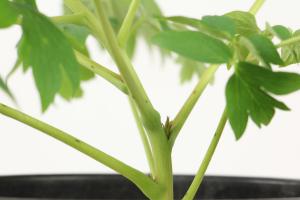How to Protect Newly Planted Trees from Wildlife
Planting a tree is an investment in our future. It takes time and effort to select the perfect spot, prepare the soil, and plant the seedling. However, once the newly planted tree is in the ground, it becomes vulnerable to wildlife damage. Rabbits, deer, and other animals can damage or kill the young tree. Therefore, it's essential to protect newly planted trees from wildlife to ensure their growth and survival. Here are some tips on how to protect your newly planted trees.
Select the Right Tree Species
Before you plant a tree, consider the wildlife in the area. Select a tree species that is less attractive to wildlife. For example, oak trees, which are common wildlife habitats, are susceptible to deer damage. On the other hand, crab apple and sweet gum trees are less attractive to deer and rabbits. Hence, planting less appealing trees will lower the risk of wildlife damage.
Use Physical Barriers
Physical barriers, such as tree guards and fencing, can be effective in keeping wildlife from damaging young trees. Tree guards are cylindrical wire mesh sleeves that can encircle the tree. They function as a shield, protecting the trunk from deer rubbing and rabbit gnawing. Make sure the tree guard is higher than the snowline and buried a few inches into the soil to prevent rabbits from burrowing under the guard.
Fencing is another practical method to protect newly planted trees. A four-foot-tall fence built around the tree can block deer and rabbits from accessing the tree. Make sure to bury the fence at least six inches into the soil to prevent rabbits from squeezing through small openings. Additionally, use sturdy fencing material, such as woven wire or plastic mesh, to prevent deer from pushing it over.
Repellents
Repellents are another option to protect newly planted trees. There are two types of repellents – chemical and physical. Chemical repellents are designed to stimulate the animal's sense of taste or smell, making the tree less appealing to them. Physical repellents use motion-activated devices, such as sprinklers, to scare animals away from the tree.
However, repellents are not a foolproof method and require frequent application. Rain, snow, and wind can negative the effectiveness of chemical repellents. Thus, it's essential to reapply repellents after a rainstorm or heavy winds.
Mulch Properly
Properly mulch the newly planted tree to safeguard it from wildlife damage or other environmental factors. Mulch will help to retain soil moisture, prevent weed growth, and improve soil conditions, which is essential for the healthy growth of the tree.
However, be careful not to apply too much mulch, which may attract rodents to build their homes around the tree. Rodents, such as mice or voles, can gnaw the tree bark and damage the tree's vascular system. Therefore, use a light layer of mulch, less than three inches deep, and keep it several inches away from the trunk.
Conclusion
Protecting newly planted trees from wildlife damage is essential to ensure their growth and healthy development. Using appropriate tree species, physical barriers, repellants, and proper mulching will help to reduce the risk of wildlife damage, allowing the tree to grow into a robust and healthy part of the ecosystem.

 how many times do yo...
how many times do yo... how many planted tre...
how many planted tre... how many pine trees ...
how many pine trees ... how many pecan trees...
how many pecan trees... how many plants comp...
how many plants comp... how many plants can ...
how many plants can ... how many plants and ...
how many plants and ... how many pepper plan...
how many pepper plan...






























